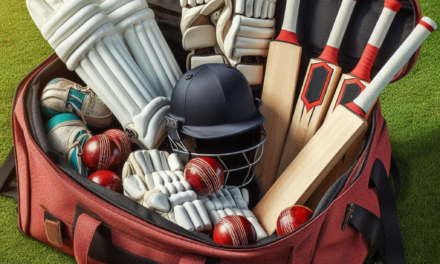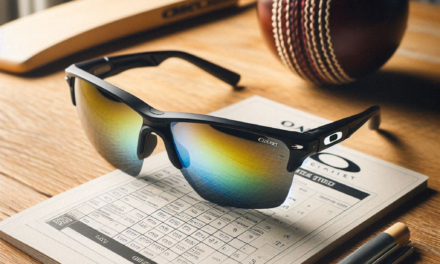Cricket is a game of skill, strategy, and precision. While the bat, ball, and wicket take center stage, the importance of protective gear, particularly cricket gloves, cannot be overstated. Cricket gloves are essential for both batsmen and wicketkeepers, offering protection and enhancing grip, which is crucial for performance. In this blog post, we’ll explore the different types of cricket gloves, their importance, and what to consider when choosing the right pair for your game.
The Importance of Cricket Gloves
Cricket gloves play a vital role in ensuring the safety of players. The hands are vulnerable to injury from the high-speed impact of the ball, whether you’re batting or wicketkeeping. Properly designed gloves cushion the impact, protect against fractures, and help maintain control over the bat or ball.
1.Protection: The primary function of cricket gloves is to protect the hands from injuries. The ball, traveling at speeds exceeding 90 mph, can cause serious damage if it makes direct contact with the hands. Gloves with reinforced padding, especially around the fingers and knuckles, are essential for reducing the risk of fractures and bruising.
2.Grip: A firm grip on the bat or while catching the ball is crucial. Gloves are designed with materials that enhance grip, ensuring that players can maintain control even in sweaty conditions. For batsmen, this grip helps in executing shots with precision, while for wicketkeepers, it aids in securely catching or stumping the ball.
3. Comfort: Comfort is key in cricket, where players can spend hours on the field. High-quality gloves are designed to be comfortable, with features like ventilation, sweat absorption, and ergonomic design to reduce hand fatigue.
Types of Cricket Gloves
There are primarily two types of cricket gloves: batting gloves and wicketkeeping gloves. Each serves a different purpose and has unique features designed to meet the demands of the respective roles.
1. Batting Gloves
Batting gloves are specifically designed to protect the hands from the impact of the ball when hitting. They also help in maintaining a firm grip on the bat.
Design and Padding: Batting gloves typically feature thick padding on the back of the hand, particularly over the knuckles and fingers. This padding is often made from materials like high-density foam or rubber, designed to absorb the shock of a fast-moving ball.
Palm Material: The palm of batting gloves is usually made from leather or synthetic materials that offer excellent grip. Some gloves also feature additional grip enhancements, such as textured surfaces or silicone prints.
Finger Protection: Modern batting gloves often include extra finger protection, such as finger rolls or reinforced finger sections. This is particularly important for protecting against balls that rise unexpectedly.
Wrist Support: The wrist area of the glove is designed to offer both protection and flexibility. Many gloves feature adjustable straps that allow players to secure the glove tightly around the wrist, reducing the risk of injury from an awkward shot.
Ventilation: Given the intense physical activity involved in batting, good ventilation is essential. Many gloves are designed with perforated panels or moisture-wicking fabrics to keep the hands cool and dry.
2. Wicketkeeping Gloves
Wicketkeeping gloves are designed to provide protection and enhance the ability to catch or stop the ball. Unlike batting gloves, they are not focused on grip for holding a bat but rather on ensuring secure catching.
Webbing: One of the distinctive features of wicketkeeping gloves is the webbing between the thumb and index finger. This webbing is designed to help catch the ball securely, especially during high catches or when diving.
Cushioning: The gloves feature substantial padding on the fingers, palms, and back of the hand to protect against fast deliveries and the force of catching the ball repeatedly.
Durability: Wicketkeeping gloves are built to withstand significant wear and tear. The materials used are often thicker and more durable, designed to last through numerous games without losing their protective qualities.
Finger Tabs: The gloves may include additional finger tabs or cuffs to provide extra protection and secure the fit around the wrist, ensuring that the gloves stay in place during intense play.
Flexibility: Despite their thick padding, wicketkeeping gloves are designed to allow flexibility and quick hand movements. This is crucial for quick reflexes, especially when stumping or taking close catches.
Choosing the Right Cricket Gloves
Selecting the right cricket gloves involves considering several factors, including your role (batsman or wicketkeeper), the level of protection you need, comfort, and the conditions in which you play.
1.Size and Fit: Ensuring that the gloves fit properly is crucial. Gloves that are too tight can restrict movement and cause discomfort, while gloves that are too loose may slip off or reduce the effectiveness of the padding. Most manufacturers provide sizing charts to help you find the right fit.
2.Level of Play: The level at which you play cricket can influence the type of gloves you need. For instance, professional or advanced players may require gloves with more advanced features and better protection compared to those just starting in the game.
3.Material Quality: The quality of materials used in the gloves will affect both their performance and durability. High-quality leather and padding materials are preferable as they offer better protection, comfort, and longevity.
4.Brand Reputation: While many brands offer cricket gloves, some have a reputation for higher quality and better performance. Brands like Gray-Nicolls, Kookaburra, and Puma are well-regarded in the cricketing community for their reliable products.
5.Weather Conditions: The climate in which you play should also influence your choice of gloves. In hot and humid conditions, gloves with good ventilation and moisture-wicking properties are essential to keep your hands dry and comfortable.
6.Budget: Cricket gloves come in a wide range of prices. While it’s tempting to go for the cheapest option, investing in a higher-quality pair can provide better protection, comfort, and durability, making it a worthwhile investment in the long run.
Caring for Your Cricket Gloves
Proper care and maintenance of your cricket gloves can extend their lifespan and ensure they remain effective.
Cleaning: Regularly clean your gloves to remove dirt, sweat, and bacteria. Use a damp cloth to wipe the surface, and let them air dry naturally. Avoid direct sunlight or using a dryer, as excessive heat can damage the materials.
Storage: Store your gloves in a cool, dry place. Avoid leaving them in a damp kit bag for extended periods, as moisture can cause the materials to deteriorate or develop mold.
Inspection: Regularly inspect your gloves for signs of wear and tear, especially in the padding and stitching. Replace them if you notice any significant damage that could compromise their protective qualities.
Conclusion
Cricket gloves are an essential part of a player’s gear, offering protection, comfort, and enhanced performance on the field. Whether you’re a batsman facing fast deliveries or a wicketkeeper catching at close range, the right pair of gloves can make all the difference. By understanding the different types of gloves, their features, and how to choose the right pair, you can ensure that your hands are well-protected, allowing you to focus on your game.
Investing in quality cricket gloves is not just about safety; it’s about improving your confidence and performance on the field. With the right gloves, you can play your best game, knowing that your hands are protected and ready to take on the challenges of cricket.





